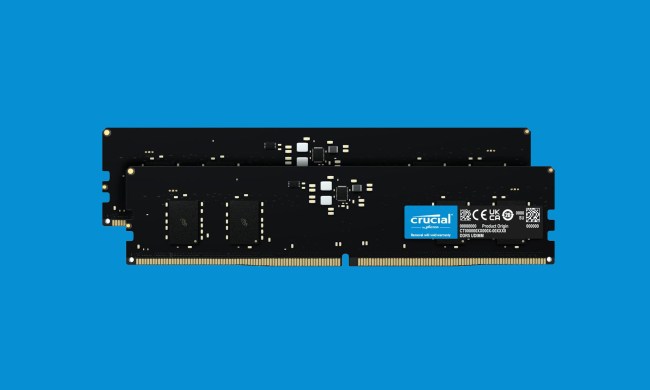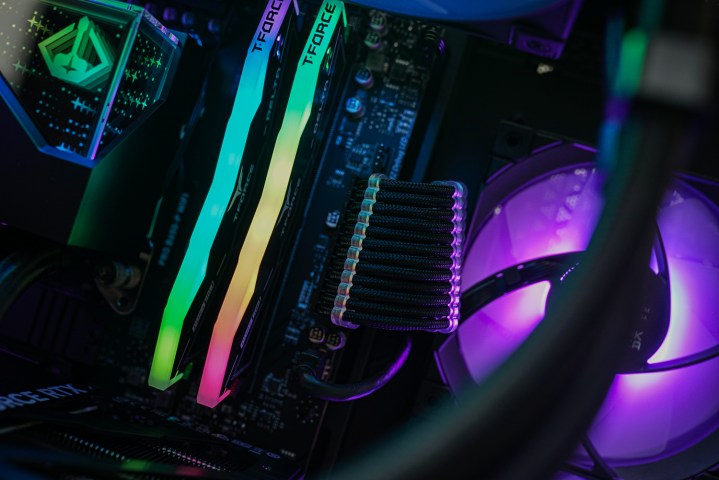
If you want to choose the best RAM for your PC, you’ll be faced with a lot of terms that may not sound familiar at a glance. DDR? DIMM? CAS? XMP? When you just want something that goes well with the rest of your PC, having to pull out a dictionary before you shop can be pretty daunting.
Fortunately, picking RAM is fairly straightforward once you understand what you’re looking for and what it means. In our RAM buying guide, we’ll walk you through the process so that you can be happy with your choice.
Understanding RAM
The thing about RAM is that you don’t need to fully get what each and every spec is responsible for — not unless you want to. If you’re building a barebones office PC, even sub-optimal RAM will make it run; the problem is that it won’t run nearly as well as it could.
Whether you’re planning to squeeze every last bit of performance out of your new RAM kit or you just want something easy and inexpensive, it’s important to understand the following three terms when you shop.
What is RAM?
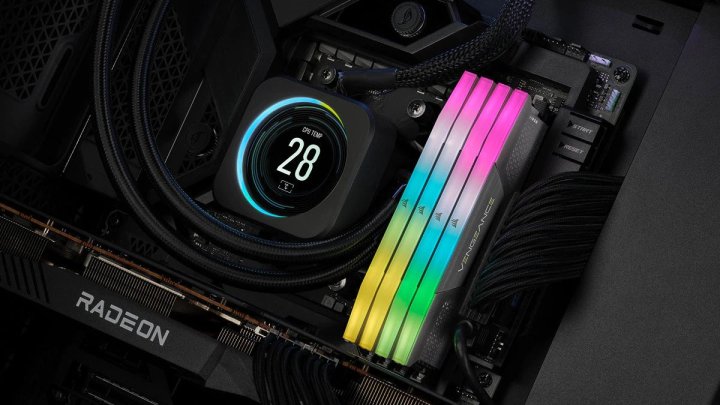
RAM stands for Random Access Memory, and more precisely, a type of volatile memory that only holds data while your PC is powered on. Its main job is to provide quick read and write access to your processor (CPU).
RAM stores the data that various programs are currently using, be it software or your operating system, making it faster to fetch when the CPU requests it. It differs from regular storage, such as SSDs and HDDs, which will store data even when you turn your PC off.
It plays a critical role in everything you do, such as by working as temporary storage space for game data, allowing seamless switching between web browsers, office software, and media players, and supporting professional workloads, be it video editing or 3D modeling.
DDR
DDR stands for Double Data Rate and is always followed by a number that refers to the generation that it belongs to, be it DDR3, DDR4, or DDR5. This is the most important RAM spec to look at, because if you buy RAM with the wrong type of DDR, it won’t run in your PC.
Every processor and motherboard is limited to supporting one or two generations of DDR RAM. Although your CPU might support both DDR4 and DDR5 — that is the case with many of Intel’s best processors right now — your motherboard will almost always be limited to just one. As such, when you build your PC, you’ll have to decide which generation of memory you’ll be using, and then stick to it until you make major upgrades.
The difference between DDR4 and DDR5 RAM is pretty major. The former is still cheaper and is compatible with older hardware. It also offers tighter timings, meaning lower latency, but more on that later. DDR5 RAM is generally much faster, costs slightly more, and is only compatible with the latest processors.
DIMM
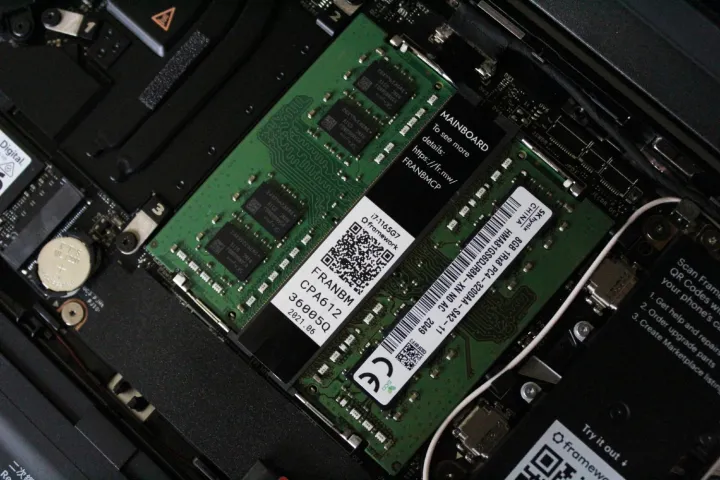
DIMM (dual in-line memory module) is a term used to describe RAM form factor. Most of the time, if you’re buying RAM, that’s what you want to see, as DIMM refers to the full-fledged RAM sticks seen in desktop PCs.
There’s also SO-DIMM (small outline dual in-line memory module). If you ever want to upgrade your laptop RAM, that is what you’ll be buying: Smaller modules made specifically for compact form factors. It’s important to note that not all laptop RAM can even be replaced, as the memory often comes soldered to the motherboard.
SO-DIMM is also used in some mini PCs, as well as regular PCs with some mini-ITX motherboards. This isn’t a rule, though, so if you own such a PC, you should still check whether you need to be buying DIMM or SO-DIMM memory. MicroDIMMs used to be a thing, too. Smaller than SO-DIMMs, they’ve pretty much fallen out of use, so they barely warrant a mention at this point.
Channel
RAM channels are often described as lanes on a road, and while that metaphor might be a little overused by now, it’s still the easiest way to explain what they do. They’re essentially pathways through which data travels between the memory modules in your PC and your processor.
RAM can be either single-channel or dual-channel, and as is the case with a busy road, it’s better to have two separate roads than just one. Using dual-channel memory lets your memory controller use two channels (duh) to exchange data, increasing bandwidth and performance by a significant margin.
Most modern motherboards support dual-channel, but that doesn’t mean that you can only install two RAM sticks in them. Motherboards will come with either two or four DIMM slots, and this is where it gets tricky — it’s important to install your RAM sticks the correct way.
For starters, you should never buy a single RAM module for a motherboard that supports dual-channel memory. The performance loss between using single-channel and dual-channel is massive, so even if you want to buy 16GB of memory, don’t buy a single 16GB module — instead, get two of 8GB each.
In a motherboard with only two DIMM slots, this will automatically activate dual-channel memory. However, if your motherboard has four slots, you need to install both modules in the correct slots in order to allow them to use the same channel. Identifying the right slots to use depends on the motherboard, so check your manual before getting started. We also talk about this more in our guide on how to build a PC from scratch.
RAM specs

Now that we got the basics out of the way, it’s time to talk about the fun stuff, meaning RAM specifications. These are the three things that will have the greatest impact on your PC performance.
Getting the above right is necessary or your RAM won’t work at all, but with the below, you have a lot more leeway — it’ll work no matter what, but there might be a vast difference in how fast your PC runs depending on what you end up buying.
Capacity
Having enough RAM capacity is even more important than focusing on high speeds. If your PC doesn’t have enough RAM, the lack of it will become a major bottleneck, and even having the best graphics card or the fastest gaming CPU won’t save you.
More RAM means better multitasking. In other words, this means gaming with Discord and the browser running in the background, having a lot of tabs open simultaneously, or even tasks that munch on PC resources like they’re candy, such as video editing and rendering. With more RAM, your PC can do all of that and more.
If your RAM doesn’t have enough capacity to support all the workloads you try to put your PC through, the computer will have to resort to disk caching. This involves using a portion of your hard drive (or SSD) as virtual memory. This is much, much slower than letting the RAM handle these tasks, which is why you always want to have ample memory for your PC to draw from.
This doesn’t mean that you should stack RAM into infinity, though. Having extra is good, both for future-proofing and for overall responsiveness. However, at some point, it suffers from diminishing returns, meaning that the more you get, the less it’ll do for you. It won’t hurt your PC to have too much, but it won’t help, either — that’s a common PC myth.
Frequency
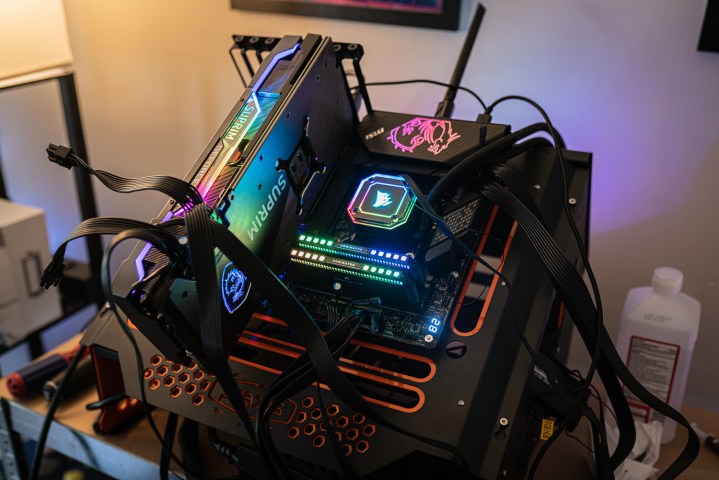
RAM frequency is something you definitely want to look at, and it’s usually easily found right in the name of the RAM stick. You’ll see RAM branded as, let’s say, DDR5-6000 or DDR4-3200, referring to the frequency of that particular model, often followed by either MT/s or MHz. It’s worth noting that in many models, this refers to the maximum frequency the RAM can run at, but it’s not necessarily the speed you’ll get out of the box. However, it’s easily obtained through enabling the right profile in the BIOS, which we’ll talk about in the overclocking section below.
This four-digit number refers to how many read and write cycles your RAM can complete in a second. With each generation of DDR memory, these speeds go up considerably. As such, DDR4 starts at 2133MHz and goes all the way up to 4800MHz (or more if manually overclocked). Meanwhile, DDR5 memory starts at that upper limit of 4800MHz, and at the time of writing, goes all the way up to 8400MHz in high-end kits. Again, overclocking will push that limit higher, and as DDR5 tech matures, manufacturers will release even faster kits. We’re not at the end of what it can offer — not even close.
Memory speed matters, but it’s all about how big a difference you’re considering. Upgrading from DDR4-3200 to DDR4-3600 is a subtle enough change that you’ll barely feel it. However, going from DDR4-3200 to DDR5-7200 is pretty huge and will have an impact on your PC performance — but it’s difficult to compare, as you’ll also be upgrading your motherboard and your CPU in that scenario.
When building a new PC, unless you’re an enthusiast with deep pockets, it’s usually not cost-effective to go for the RAM with the highest frequencies available, such as buying DDR5-7200 instead of DDR5-8400.
Timings
In terms of frequency, more is better, but when we’re talking about CAS (Column Address Strobe) latency, the opposite is true. This refers to the delay, measured in clock cycles, between when the CPU requests the data from your RAM and when it’s sent to the processor. Just like your so-called ping in games, you want this to be as low as possible — but much like frequency, CAS is limited by the DDR generation you’re using.
In terms of spec sheets, you’ll often see the word CL followed by a series of numbers, such as “CL16-18-18-36.” Each of the numbers refers to different timings. The first number is the actual CAS latency, meaning the time it takes for your RAM to fetch the data the CPU is asking for. This is followed by row address to column address delay (RAS to CAS), row precharge time (TRP), and lastly, row active time (tRAS).
Unless you’re into extreme overclocking, you don’t need to worry about timings beyond “the lower, the better.” Unfortunately, DDR5 RAM has pretty much doubled the timings, meaning that the frequency is faster, but the latency is higher. You’ll see numbers like CL14 or CL18 for DDR4, but rarely less than CL32 for DDR5.
Other specs
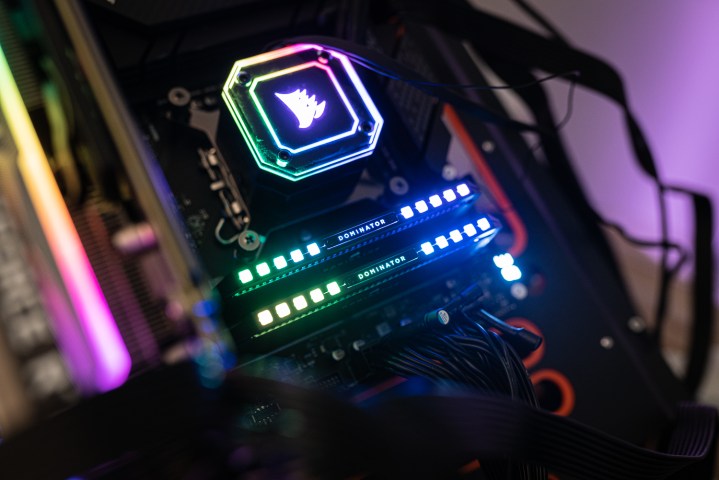
Even if you’re an enthusiast trying to build a solid PC, you only really need to concern yourself with the three specs listed above. They’re the ones that determine how well your RAM performs, and thus, how speedy your PC is.
However, if you want to learn as much as possible before buying RAM, there are a few other specs and features to consider.
- Heat spreaders. If you’re building a really high-end PC, you might want to aim for equally high-end RAM and buy a model that comes with its own heatsink. However, it usually doesn’t make much of a difference in cooling — the fans you have in your case will suffice.
- Aesthetics. These days, RAM comes with or without RGB lighting, and some kits come in white (again, with or without RGB). You’ll usually pay a premium for these improvements, but hey, it does look pretty nice.
- Height. If your case is super cramped, you should probably check to make sure that your new RAM will fit. Realistically, this is only a concern in small cases and form factors.
You’ll also find that RAM brand matters in terms of price, but not always in terms of performance. RAM manufacturers all use the same memory modules, either from Samsung, SK Hynix, or Micron, and then assemble them into kits. Some are better, and some are worse, but it’s not a universal truth that RAM made by a reputable brand, such as Corsair, will be far better than something manufactured by a more affordable company, such as TeamGroup. Read user reviews and ratings, and don’t worry if you end up buying a cheaper alternative.
Overclocking
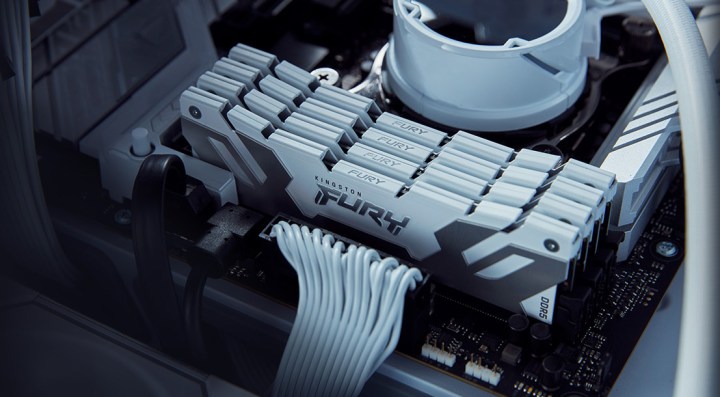
For RAM to run at the advertised maximum speed, you’ll often need to overclock it, but that just comes down to enabling the right XMP or DOCP/EXPO profile in the BIOS.
This means that, when shopping, you should try to aim for kits that are compatible with your processor and motherboard and will allow you to make the most of their advertised speeds. XMP is Intel’s proprietary technology, and DOCP and EXPO are the AMD equivalents. Buying RAM that doesn’t support the right kind of pre-overclocked profiles doesn’t mean that the memory won’t work at all — it will, but it’ll only run at the default speeds.
When you first install new RAM, it’ll run at box speeds, which can often be well below the maximum speed it’s capable of. Fortunately, overclocking is easy thanks to these premade profiles that are enabled in the BIOS. Not sure how to do this? No worries — check out our guide to RAM overclocking and our step-by-step guide to enabling XMP.
What RAM do you need?

By this point, you’re a true RAM pro and you’re fully ready to make an informed choice. However, knowing what DDR or CAS stands for doesn’t necessarily mean that it’s easy to decide how much, and what kind of, RAM you really need.
Below, we’ll walk you through the three main points of consideration.
DDR4 vs. DDR5
Deciding between DDR4 and DDR5 memory is tricky, and that’s because you’re unlikely to be basing your decision entirely on the type of RAM you want to use.
You’ll be locked to a certain type of RAM when you pick a processor and a motherboard. Some Intel CPUs, including the Alder Lake and Raptor Lake generations, support both DDR4 and DDR5 RAM. Meanwhile, AMD supports either DDR4 or DDR5 with no overlap. Regardless of your CPU, the motherboard will force you to choose a specific RAM type.
DDR4 still has some merit in budget-oriented builds, but if you’re buying an Intel CPU that lets you choose one or the other, you should aim for DDR5. It’s simply better for future-proofing purposes. Pairing an Intel chip with DDR4 RAM at this point means no upgrades for you in the future, because, while DDR5 will keep evolving and dropping in price, DDR4 has reached its maximum capabilities and won’t be getting any better.
In short, choose what your budget can stretch to, but DDR5 is a better option these days if you don’t mind the additional expense.
Capacity
Depending on what you’re going to do with your PC, you’ll need more or less RAM. There’s a point where it’s too much and you’re wasting money, but there are several thresholds to reach before you even come close to getting to that point.
At the time of writing, our recommendations are as follows:
- 8GB RAM: This kind of capacity is only really acceptable in thin-and-light laptops. If all you ever do is casually browse the internet, you’re fine with choosing 8GB, but multitasking is slowly becoming harder to do with this kind of capacity. Needless to say, the same applies to 4GB.
- 16GB RAM: As of 2024, this is the capacity to aim for for non-gamers. If you use your PC for work, watching Netflix, browsing the internet, and perhaps playing the occasional indie game, you can settle for 16GB.
- 32GB RAM: These days, 32GB RAM is becoming the standard capacity for gamers. More and more AAA titles request 32GB of memory in order to run at high settings. Moreover, if you tend to run multiple programs at once on top of games, you’ll definitely want 32GB in order to make sure that you never run out of RAM.
- 64GB RAM and more: Right now, 64GB is helpful if you need your PC for heavy workloads, such as 3D modeling. Gamers don’t quite have any use for 64GB just yet, but if you want to stack up, there’s no harm in it. It will come in handy eventually. Going above 64GB makes no sense unless your work requires it, though.
We also have a much more in-depth guide to choosing the right RAM capacity for your needs.
Before you settle on any particular capacity, make sure to check how much going up to the next threshold is going to cost you. You might be surprised how small the price difference can be sometimes, but the impact on performance can be massive. Always aim to buy more RAM than you currently need.
Speed

Once you’ve chosen the right type of DDR and capacity, you’ll have to factor in the frequency and the timings of your RAM. In this, your budget will often dictate what’s available to you.
Choosing higher speeds often comes with a huge price hike; for instance, switching from 32GB of DDR5-6000 memory to DDR5-7200 will cost you about $40 to $60 or more. The gap is smaller for kits with less capacity, and as a rule of thumb, high-end RAM with top speeds will always cost far more than it’s worth.
Going up by 1000MHz will make a difference, but you’re usually better off spending more money on an improved cooling solution or a better power supply. If budget matters, aim for the mainstream speed — not too low and not too high.
If you need advice on which RAM kits are worth the money, check out our guide to the best RAM to see memory modules that we’ve tested ourselves.


